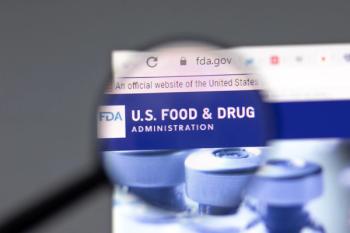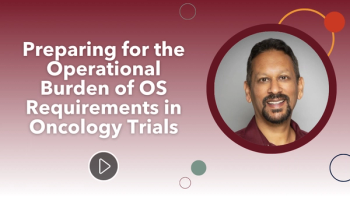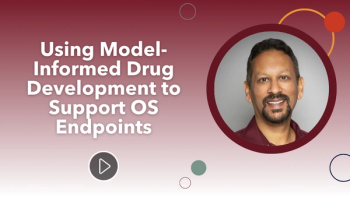
- Applied Clinical Trials-07-01-2006
- Volume 0
- Issue 0
Bridging the European Regulatory Gap
European Medicines Agency adopts new approach to drug development process.
Any regular commentary on the environment for the pharmaceutical industry in Europe is bound to have a predominantly negative tone, so it is a welcome change to be able to record a positive development in the regulatory context—and one that should make life a little easier for everyone involved in developing new medicines.
Peter O'Donnell
Starting July 1st, the European Medicines Agency is changing the way it provides scientific advice on the research and development of new medicines, including assistance on protocols. Sponsors can expect final advice after as little as 40 days, and certainly within 70 days—compared to the previous 100-day procedure. The experts will be involved earlier and more systematically. The agency's Scientific Advice Working Party is being expanded from 22 to 26 members.
And with the same attention to broadening the relevance and legitimacy of the advice, internal assessors will be backed up by more external experts. For example, the agency is introducing a formal peer review of advice before it is issued, to maximize clarity and to ensure consistency. It is also ensuring closer collaboration with academia, learned societies, and patient organizations.
At first sight this might not seem so momentous. But it represents another important step in bridging the gap that regulators in Europe have been trying to straddle for nearly half a century.
A theoretical balance
From the very first steps in European-level drug regulation, which led in 1965 to the first EU directive on pharmaceuticals, a theoretical balance has been sought between making drugs safe and making drugs available. But for decades, as EU drug legislation evolved, the emphasis was very much more on the safety aspects, while getting useful new treatments onto the market was relatively neglected. As Pierre Joly, the larger-than-life boss of Roussel Uclaf and long-time president of the French drug industry association, famously remarked back in the 1980s: "If the pharmaceutical industry was building a car, they'd start by designing the engine. But the regulatory authorities would start by designing the brakes."
In recent years, this trend has been gradually modified, as the once-unchallenged supremacy of the European pharmaceutical sector came under increasing attack from global competitors and as its share of innovation started to decline. Even the most conservative regulators started to notice that not only were the brakes they had designed very effective, but that the motor was misfiring and in need of maintenance.
EU Saga on Children Medicines Ends
Intermittently, but increasingly, the authorities in Europe admitted that a one-dimensional view of the role of regulator was not enough. The needs of patients would not be best served if new drugs were systematically kept off the market. The art of the exercise came to be seen not just as excluding new drugs with inadequate merits, but in providing a context conducive to the emergence of demonstrably effective medicines. The underlying philosophical drift was from confrontation to collaboration—or, in that overworked phrase, synergy.
One of the consequences was the explicit stress in the last major revision in 2004 of the EU's pharma rules on improving the competitiveness of European-based research and development of medicines. And although much remains to be done in that direction—particularly on the economics of drug provision in Europe—there has been a perceptible shift in the approach of the Medicines Agency.
Faster development
The agency, which by its nature is at the sharp end of so many critical decisions on the development of individual drugs, has made a priority out of providing scientific advice to sponsors, whether pharmaceutical industry or other researchers. It aims to help sponsors to develop new medicines faster and more effectively, "which, ultimately, helps to speed up access of patients to innovative new medicines," it openly states in the announcement of its modified "Framework for Scientific Advice & Protocol Assistance."
The Scientific Advice Working Party is now a formal EU body, with the sole remit of providing scientific advice, particularly regarding the development of new therapies. It includes specific expertise in preclinical safety, pharmacokinetics, statistics, and therapeutic fields for which there are frequent requests (such as cardiology), as well as in fields already defined by the EU as priorities: oncology, diabetes, neurodegenerative disorders, and infectious diseases including HIV. Because of its growing workload—in 2004 it dealt with 109 requests, twice the number of the year before—it has been meeting for two days a month on a regular basis, and it will now meet for three-day sessions.
Scientific advice may be requested for all human-use medicines, whether or not their degree of innovation makes them eligible for the EU's centralized procedure. Protocol assistance is available for designated orphan medicinal products. The requests entertained by the working party stretch widely, covering practically everything except for pre-assessment of data to be used to support future marketing authorization applications, and they must relate to the scientific aspects of product development. This means they can cover chemical, pharmaceutical, and biological quality testing; toxicological and pharmacological nonclinical tests; and clinical studies in either patients or healthy volunteers, including clinical pharmacological trials to determine efficacy and safety pre- or postauthorization. The assistance on protocols extends to questions about demonstrating significant benefit within the orphan indication and about similarity or clinical superiority in relation to other orphan products with market exclusivity.
The new procedures will be more flexible, making it easier, for instance, for sponsors to seek follow-up advice. The broadened definition of a follow-up request is meant to be an incentive to encourage applicants to seek scientific advice or protocol assistance as many times as necessary throughout their development program—that way, continuity in the agency's support of the development of their product can help reduce the uncertainties of the marketing authorization process. There will also be measures to provide incentives to smaller firms. The new framework is intended to allow more interaction with sponsors by providing new dialogue phases and opportunities for feedback, and by intensifying protocol assistance, which is of particular value to smaller firms and sponsors developing emerging therapies.
The new procedure makes explicit the growing acceptance of synergy. "The main stakeholder of scientific advice is the pharmaceutical industry. However, since better scientific advice means better, more effective, and faster development of safe and effective medicines, scientific advice is ultimately beneficial to patients and health care professionals as well," says the agency's announcement. It is a valuable acknowledgement of an underlying but underestimated factor in new medicines provision.
Heart of the matter
Meanwhile, the agency has not given up its day job. It is continuing to assess applications and to issue guidance on how broader new problems relating to applications should be approached. To address one of these emerging questions, it has issued a concept paper to promote discussion on the use of genomics in cardiovascular clinical trials. This has arisen from agency awareness of the growing volume of reflections on how drug efficacy can be influenced by patients' genetic background—including susceptibility to develop diseases, genetic variations in drug targets, physiological counter-regulation effects, and drug tolerance.
The problem the agency is drawing attention to is that most scientific studies are inconclusive as to whether a clear association can be established between genetic traits and outcomes of cardiovascular disease treatments. The current state of knowledge of the polymorphisms relevant to cardiovascular diseases does not appear sufficiently mature, particularly because of the fragmented knowledge that is acquired with the type of clinical trials undertaken so far, says the agency. It is convinced that newer, more robust approaches for generating pharmacogenetic data from clinical trials in the cardiovascular field are needed.
As a response, it is proposing to conduct a critical review of the experience from clinical trials that explore the association of genomic traits in response to medicines in the cardiovascular diseases area. This could serve to help future applicants by setting out general scientific principles for clinical trials incorporating genomic variables.
Peter O'Donnell is a freelance journalist who specializes in European health affairs and is based in Brussels, Belgium.
Articles in this issue
over 19 years ago
Demand for Evidence Drives Research Processover 19 years ago
CLEAR: An EU Postgraduate Training Programover 19 years ago
Skill-Specific Staffing to Ensure Oncology Trial Successover 19 years ago
Spotlight on Open-Label Extension Studiesover 19 years ago
Managing the Drug Supply Chain with eProcessesover 19 years ago
eShowcaseover 19 years ago
Cleaning Up Pharma's ReputationNewsletter
Stay current in clinical research with Applied Clinical Trials, providing expert insights, regulatory updates, and practical strategies for successful clinical trial design and execution.






.png)



.png)



.png)
.png)
